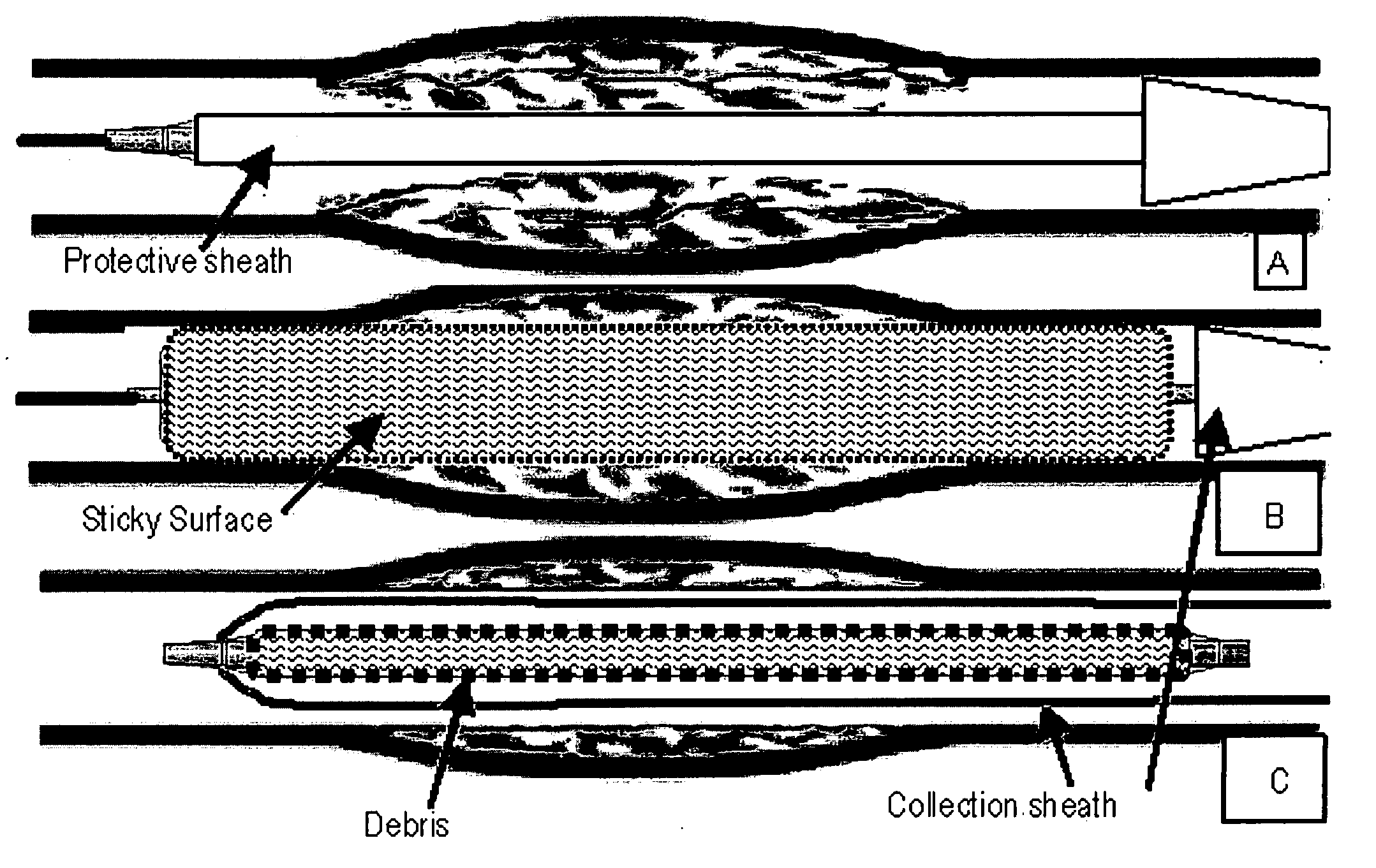Sticky dilatation balloon and methods of using
a dilatation balloon and stick technology, applied in the field of medical devices for preventing embolization, can solve the problems of tissue debris or emboli trapped on the surface of the balloon, and achieve the effects of reducing the risk of embolism
- Summary
- Abstract
- Description
- Claims
- Application Information
AI Technical Summary
Benefits of technology
Problems solved by technology
Method used
Image
Examples
Embodiment Construction
[0034]In accordance with the present invention, the preferred method for protecting against embolization in a stenting procedure is to use a sticky dilatation balloon with an outer surface that adheres to or grabs tissue debris and other extraneous materials. The balloon's outer surface can have a chemical bonded to it that adheres to unstable plaque substances such as lipids, cholesterol, thrombus, or calcium bits (see FIG. 1). Alternatively, the balloon can be covered with nano / microhooks (i.e. Velcro), nano / microfibers, hairs, split hairs, meshes, loops, foam, nano / microsuction cups, a soft or viscous gel layer, weaves, braids, aligned nano / microfibers, swirls, helical coils, nano / micro bumps, nano / micro pits, nano / micro jaws, or any other surface structure for trapping debris (see FIG. 2).
[0035]The emboli adhering / trapping surface can be part of the walls of an expandable element (i.e. inflatable balloon) or integrated onto a separate and distinct expandable cover (i.e. outer sh...
PUM
 Login to View More
Login to View More Abstract
Description
Claims
Application Information
 Login to View More
Login to View More - R&D
- Intellectual Property
- Life Sciences
- Materials
- Tech Scout
- Unparalleled Data Quality
- Higher Quality Content
- 60% Fewer Hallucinations
Browse by: Latest US Patents, China's latest patents, Technical Efficacy Thesaurus, Application Domain, Technology Topic, Popular Technical Reports.
© 2025 PatSnap. All rights reserved.Legal|Privacy policy|Modern Slavery Act Transparency Statement|Sitemap|About US| Contact US: help@patsnap.com



